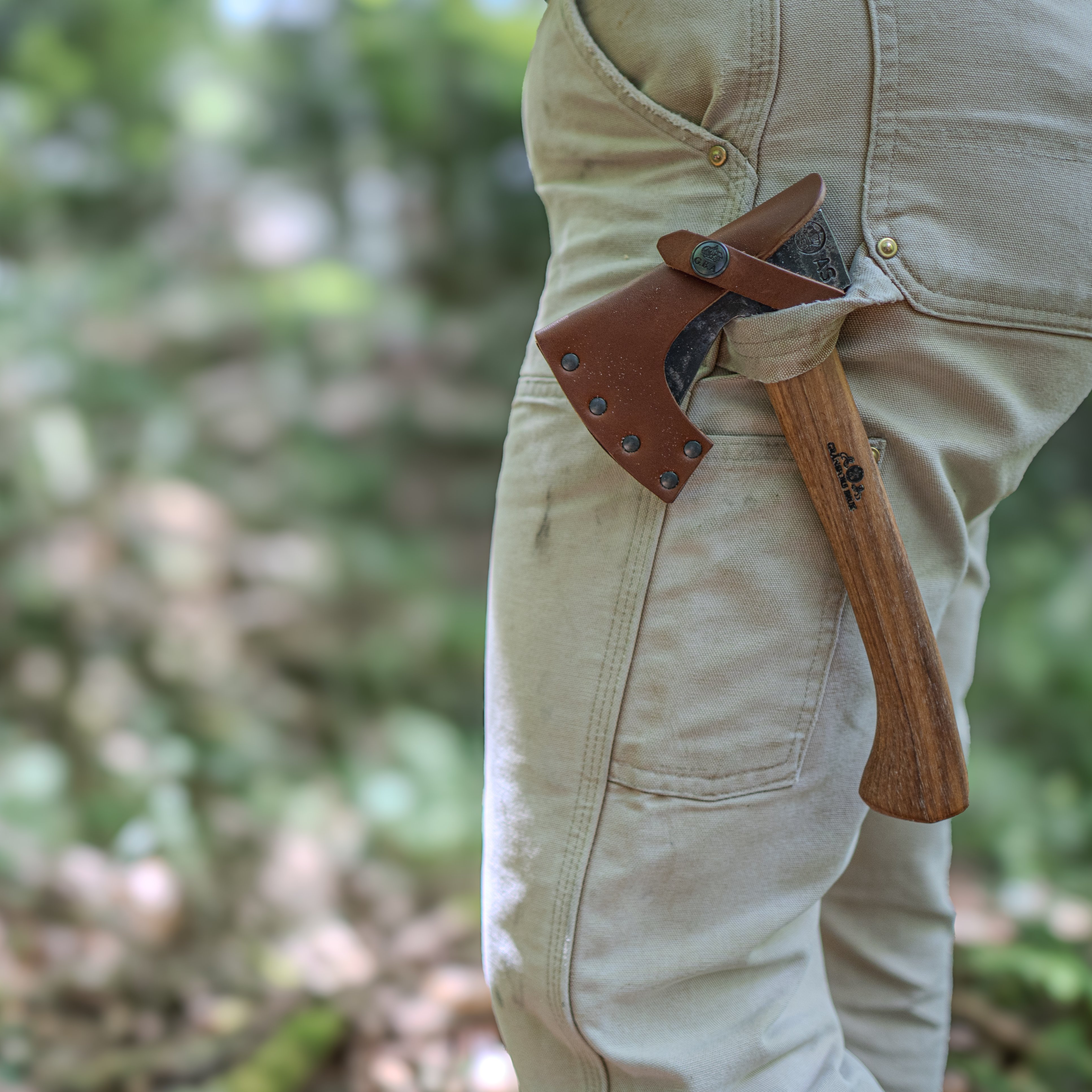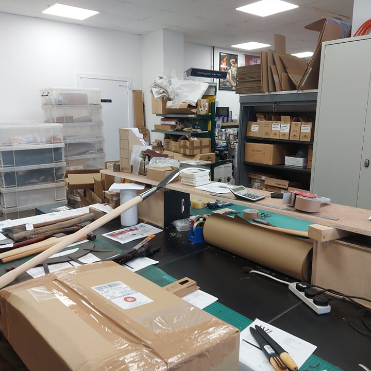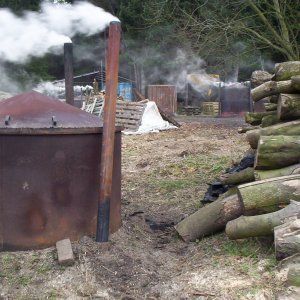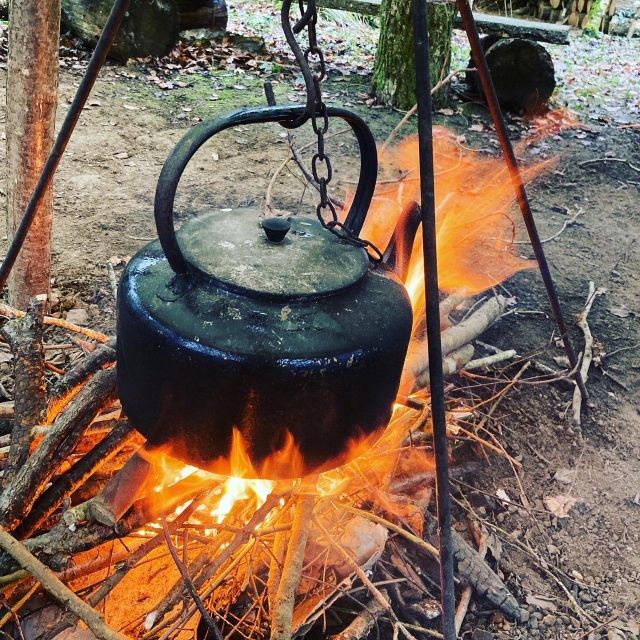Essential Hand Tools for Green Woodworking Beginners
At Woodsmith, we rarely recommend beginners to start off by buying niche tools, unless they have a very specific project in mind. Instead, we point people in the direction of more general purpose tools which are able to facilitate a broad range of experience as you begin to explore the world of traditional woodwork, which will still be tools that will withstand generations of use. In our opinion, these tools are:
Froe
Designed to split wood cleanly and precisely, Froes are beaten with a wooden mallet to cleave along the grain. The shape is designed so that the tool can be twisted when in the cut, encouraging the fibres to part easily. Many people find froes easier to use for splitting than an axe, and it is never a bad idea to have a dedicated tool which is designed to be repeatedly hit with a mallet (although a good axe can withstand a degree of beating from a wooden mallet).
In terms of value for money, we recommend froes made By Ray Iles, specifically the Large Froe, as the most versatile option. For something hand-forged and a little bit bit special, the Gransfors Bruk Froe is a great option.
Drawknife
A two handled blade designed to be pulled (or 'drawn') towards the user. The purpose of a drawknife is to remove long shavings of material from wood and is an essential tool for chair-makers and coppice craftspeople alike. Drawknives are often used in partnership with a shavehorse, but this can be substituted for a workshop vice or cleaving break. Our most popular drawknife is the Ray Iles Mike Abbott pattern, created in collaboration with Mike Abbott, chair-maker and pioneer of the current resurgence in British traditional craft. There are a huge range of more specialised drawknives which are each adapted towards certain tasks, but we feel that the Ray Iles Mike Abbott pattern offers the broadest range of applications and is particularly ergonomic. Perfect for beginners and seasoned woodworkers alike.
Knife
A good general-purpose knife is perhaps the most fundamental tool in any green woodworker's kit. When selecting a knife, there are three key factors to consider: versatility, edge retention, and bevel angles.
Versatility comes from the blade's profile and size. A knife that's to
o specialised will limit your range of cuts, while one that's too large becomes unwieldy for precision work. Edge retention is crucial for maintaining consistent performance throughout long working sessions. There's nothing more frustrating than a blade that dulls quickly and requires constant sharpening. The bevel angle determines how the knife cuts through wood fibres; too acute and the edge becomes fragile, too obtuse and it requires excessive force.
For beginners, and general knife work, we consistently recommend the Morakniv Basic 511. This Swedish-made knife strikes a good balance between all three factors. The blade geometry offers versatility for general woodworking tasks, whilst the high-carbon steel provides great edge retention at this price point. The comfortable handle encourages safe and proper technique, making it an ideal learning tool that won't hold you back as your skills develop. The 511 will have its limitations when it comes to anything fine or detailed, so worthwhile also considering adding a Morakniv 120 Carving Knife.
Axes
The choice of axe can be both expensive and daunting for novices, with premium tools often commanding significant investment. However, there are affordable options that provide genuine quality without breaking the bank.
For those starting out, we recommend the Bahco Hatchet as a basic, entry level, option whilst you're still exploring the craft. What makes this particularly appealing is that we regrind these
axes in our shop to optimise them specifically for carving applications. Despite being amongst the more affordable axes available, the steel quality is actually surprisingly good for the cost. The profile of the axe also makes it suitable for splitting small kindling, or other general purpose tasks.
For those seeking a more premium general-purpose option, the Gransfors Bruk Wildlife Hatchet offers great versatility. The steel quality (Swedish EN9) is in-keeping with the premium name of Gransfors Bruk, maintaining a razor-sharp edge through extended use. This is a premium tool equally suited to both general carving work and camp tasks, making it an excellent investment for those who want one axe to do most things well. The Hand Hatchet has the same head at as Wildlife Hatchet, but the shorter handle alters the balance, which in turn makes the user feel as if there is more weight behind the tool, which is preferable to some.
It's worth noting that dedicated carving axes often see prices increase whilst their range of applications decreases. These specialised tools can be wonderful for specific tasks, but they require a more nuanced understanding of when and how to use them
effectively. If you're interested in exploring more specialised tools, please contact us directly and we would be happy to chat about what might work best for your particular application.

Saw
Finally, beginners will need a quality saw to complete their basic toolkit. For green woodworking, we consistently recommend a Silky Saw because of the great quality-to-price ratio. The folding aspect makes a saw much more portable an important consideration for those working outdoors or in small workshop spaces where every tool needs to earn its place. We suggest the Silky Gomboy series. These Japanese saws cut on the pull stroke, which feels natural quickly and provides excellent control. The aggressive tooth pattern makes short work of green wood.
Sharpening
In order to keep your new tools sharp, its important to own a sharpening kit and learn how to use it. The Woodwright Designs Sharpening Set is a great affordable option using abrasive films which both perform extremely well and are cheap to replace when necessary. This kit is what we use in our workshop for tool honing, its not just for beginners.





